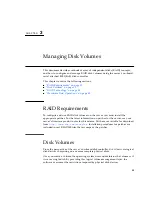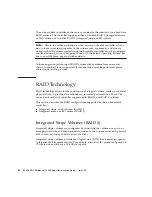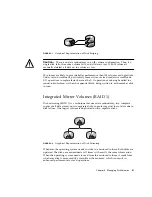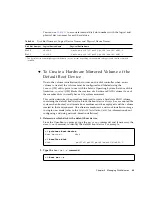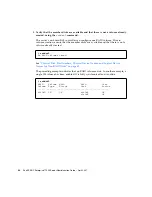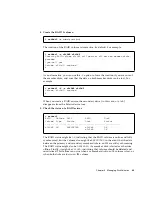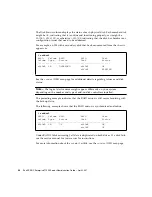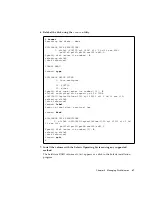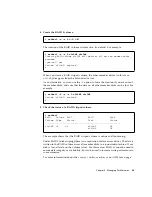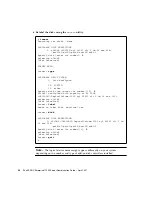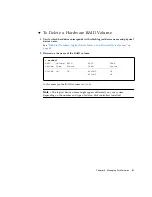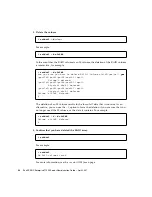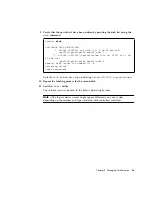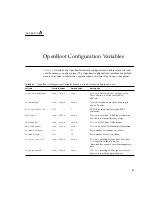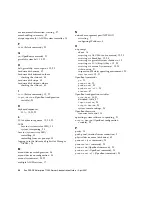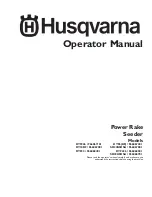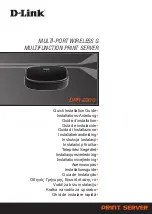
52
Sun SPARC Enterprise T1000 Server Administration Guide • April 2007
3. Delete the volume.
For example:
In the event that the RAID volume is an IS volume, the deletion of the RAID volume
is interactive, for example:
The deletion of an IS volume results in the loss of all data that it contains. As an
alternative, you can use the
–f
option to force the deletion if you are sure that you
no longer need the IS volume, or the data it contains. For example:
4. Confirm that you have deleted the RAID array.
For example:
For more information, see the
raidctl
(1M) man page.
#
raidctl -d
volume
#
raidctl -d c0t0d0
#
raidctl -d c0t0d0
Are you sure you want to delete RAID-1 Volume c0t0d0(yes/no)?
yes
/pci@7c0/pci@0/pci@8/scsi@2 (mpt0):
Volume 0 deleted.
/pci@7c0/pci@0/pci@8/scsi@2 (mpt0):
Physical disk 0 deleted.
/pci@7c0/pci@0/pci@8/scsi@2 (mpt0):
Physical disk 1 deleted.
Volume ’c0t0d0’ deleted.
#
#
raidctl -f -d c0t0d0
Volume ’c0t0d0’ deleted.
#
#
raidctl
#
raidctl
No RAID volumes found
Summary of Contents for SPARC Enterprise T1000
Page 4: ......
Page 8: ...viii Sun SPARC Enterprise T1000 Server Administration Guide April 2007 Index 61...
Page 10: ...x Sun SPARC Enterprise T1000 Server Administration Guide April 2007...
Page 12: ...xii Sun SPARC Enterprise T1000 Server Administration Guide April 2007...
Page 18: ...xviii Sun SPARC Enterprise T1000 Server Administration Guide April 2007...
Page 42: ...24 Sun SPARC Enterprise T1000 Server Administration Guide April 2007...
Page 74: ...56 Sun SPARC Enterprise T1000 Server Administration Guide April 2007...
Page 78: ...60 Sun SPARC Enterprise T1000 Server Administration Guide April 2007...
Page 82: ...64 Sun SPARC Enterprise T1000 Server Administration Guide April 2007...


